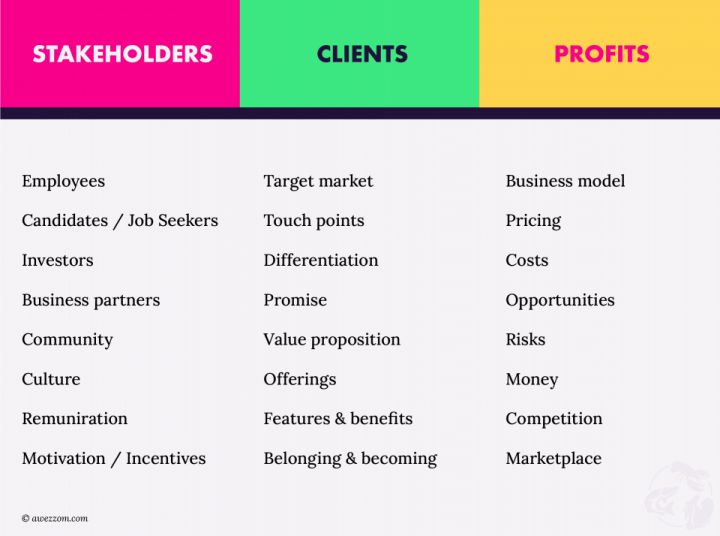How many times have you heard your next would-be professional services supplier say: I am an accountant, I work for a legal firm, we’re in digital marketing, etc.? Full stop. Blank expression on both receiving and transmitting ends afterwards. This is often (innocent until proven guilty) an indicator of poor positioning on their part.
But how about your firm?
We’re all aware of a concept of an elevator pitch. Anyone at your firm should be able to deliver it on a short notice to a prospect within 60 seconds or less. If not, perhaps it’s time to have a chat with the team. Such a nuisance as an elevator pitch might seem unimportant, thus often left unattended, but in fact it’s quite telling.
A poorly formulated, generic elevator pitch says nothing to the prospect. They would only hear you say what they already know — you’re just like everybody else. Unless you’re not. In which case you gotta help them understand this.
Go ahead and deliver an elevator pitch yourself or ask one of your account managers / sales reps to do it as if you were a prospect. In under a minute. What you will hear your people (and yourself) say will reveal a lot if you listen carefully.
The problem with an average elevator pitch isn’t with how cleverly the words are weaved into clever sentences, of course. It’s much deeper than that.
An elevator pitch is a litmus test of your key strength or (often) your key weakness — your firm’s positioning.
Positioning of a professional services firm
A good elevator pitch is a reflection of a well-defined positioning. A well-defined positioning is none other than your firm’s differentiated business strategy. This definition has three constituent elements: Business, Strategy and Differentiated.
Business is how you’re going to make money to sustain the enterprise. You have to make ends meet. While you’d be able to provide some of your service offerings in-house with just a handful of people, some services will require you to hire additional staff or rely on third parties. The business side should work out regardless. You have to work without losses while still delivering on the promise.
Strategy is the plan of activities based on the research into your target market. You (should) know your target market so well that you know better than anyone else what is going to work for them. And you’re betting all of your chips that you’re right.
And differentiated part is what makes your services somewhat different than what’s already available in the marketplace. It might be a unique or different business model. It might be your pricing strategy. Or it’s just the good-ol’ service everyone’s familiar with but repackaged in a more compelling way.
The combination of the three constituents secures the perfect positioning.
What is the perfect positioning?
Ideally the perfect positioning is a differentiated business strategy that makes your firm irreplaceable. But this is rare. (The best-positioned professional services firms close 75% of business opportunities.) More often it’s a combination of the three elements that makes your firm less interchangeable.
You might have came across the following approach to positioning: We are X for Y. It’s a solid approach. You might’ve also heard about the differences between vertical and horizontal positioning. Let’s look at the former.
We do X means this is how we make money — “the business” side. We are a law firm. We’re a CPA firm. We are engineers. We are architects. We’re IT & tech guys.
We do this for Y means these are the type of clients we work with — “the strategy” side. We have the insight into the marketplace. We know what kind of clients will buy certain kinds of services from us, e.g., we provide legal support to non-profits; we offer accounting services to marketing firms.
All of this suggests that these services would’ve been different should the person of interest, aka client, change. So an accounting firm A offering its services to marketing agencies should have services that are very different from another accounting firm B that offers its work to non-profits. If not — if services are interchangeable across client types, and swapping labels wouldn’t make any difference — the X for Y doesn’t make sense and has to be reviewed.
But as I’ve noted earlier positioning is a differentiated business strategy. You will notice that the X for Y approach is missing the third ingredient — “differentiated” — the Z part.
So the three components you need to pay attention to are: X — business, Y — strategy and Z — differentiation. If you look at this through the lens of the SCP model it will make even more sense.

Positioning through the lens of the SCP model
The Swan-Crawfish-Pike model has three constituent elements — three pillars: Stakeholders, Clients and Profits.
The first element of the differentiated business strategy — business — is part of the Profits pillar. The second element — strategy — is part of the Clients pillar. And since the third part is a constituent of the Stakeholders pillar, it must be related to employees, principals and culture.
Every professional services firm is unique in terms of composition of individuals working together; their talents, experience, opinions, strengths and motivations. So the third part is none other than the firm’s unique point of view, its own way of doing things, its beliefs in how this kind of work should be carried out for this kind of clients.
Differentiation comes from this firm belief in doing the work, everyone else is doing, differently. Not for the sake of being different, but for the sake of providing a different kind of value to clients. This compelling value proposition should be backed up by data.
What kind of positioning is better?
You could easily find a firm that would position themselves as follows: “We do web design for hospitals.” Another firm might say: “We do web design for start-ups.” And a third firm might claim: “We do web design for hospital start-ups.”
Out of three the third firm is obviously better-positioned than the former two. In theory. But there’s a caveat. There might be less than enough opportunity for this kind of positioning for this third firm. If there aren’t as many hospital start-ups around, the size of the firm could be an impediment. Something to keep in mind.
The firm doesn’t have to be positioned too narrowly if the competition is low. But it is rarely the case. Often competition is fierce and increases by the day. The firm must therefore find its way to stand out and occupy a defensible position in the marketplace.
The reason why I use imperative here is because either the firm does this or . . . why would the world need yet another undifferentiated vendor? The marketplace is under no obligation to make an average firm successful.
So which positioning is better? The one that allows your firm to be sustainable yet less interchangeable.
How do you stand out from your competitors today?
Differentiation comes to the rescue when you want to stand out from the crowd. It’s the third — This (Zis) way — part. It can be your point of view, it can be your processes, your intellectual property, your pricing — anything that is unique about your firm yet simultaneously valuable to your clients. A compelling way of doing things (slightly) differently than all of the other undifferentiated vendors.
And so it comes to this. To get to a better, more defensible place your firm needs a differentiated business strategy. The elevator pitch is a quick test of your positioning. It isn’t the only one and it isn’t thorough. It can’t test how compelling your positioning is but good enough as a litmus test of whether or not you have a meaningful positioning.

Some of you reading this would like to have a visual representation of this idea of positioning; to better remember it. The way I like to imagine this is via the crosshairs. You have two intersecting horizontal (X) and vertical (Y) lines. That’s X for Y. And then you have a circle with the center point at the intersection of those two axis. That’s your way of doing things.
To explore this idea of perfect positioning deeper, consider reading a more recent article.
If you’re more of a maths person, you could imagine the representation of this idea as X, Y and Z axis, and their intersection. In this case you have a 3D environment, and your job is to move across X, Y and Z axis to find the point of focus.
You will know your firm is in the crosshairs of perfect positioning when you can confidently say: “We will do this kind of work for this type of clients, and we’re gonna do it this way.”
The advisory service in which we address your firm’s positioning is called Market Positions suite
The awezzom question of the day:
What should our firm’s perfect positioning look like?

